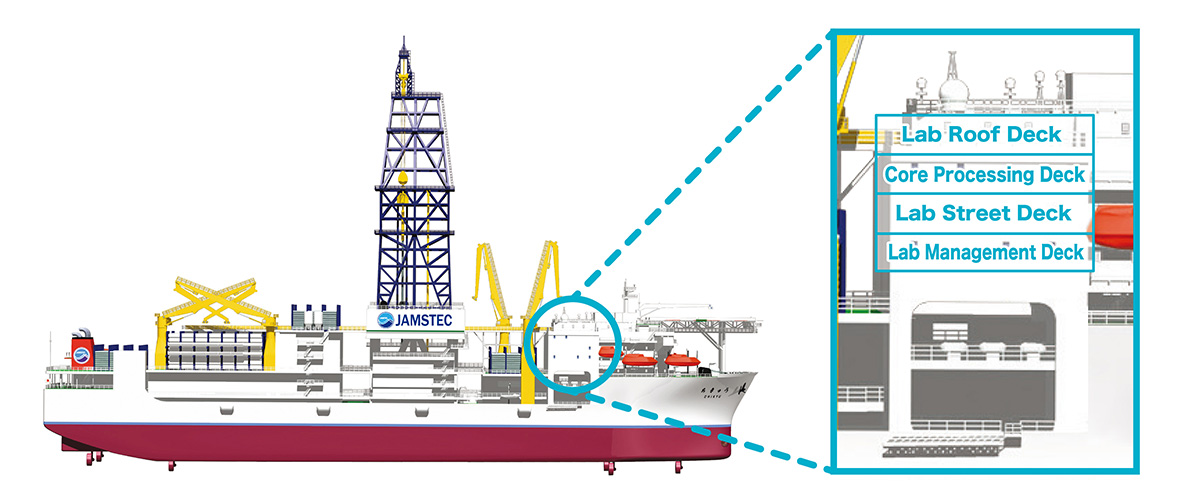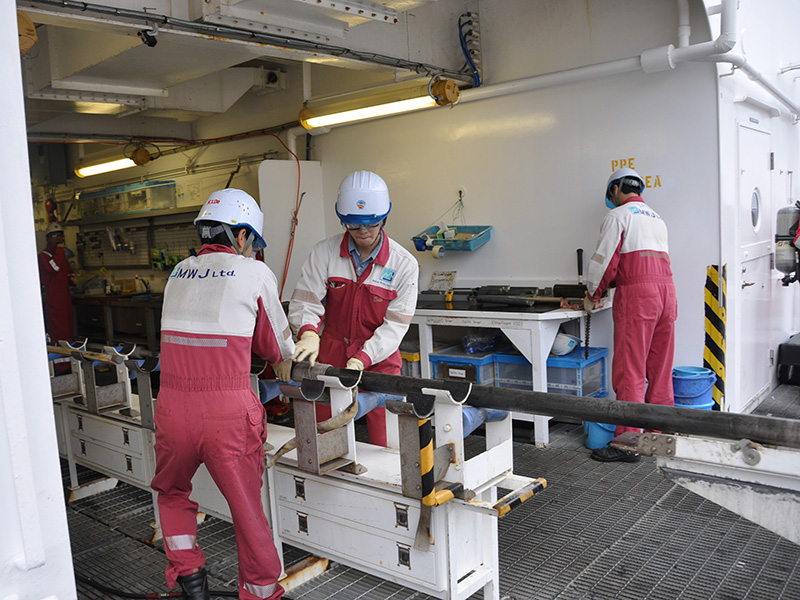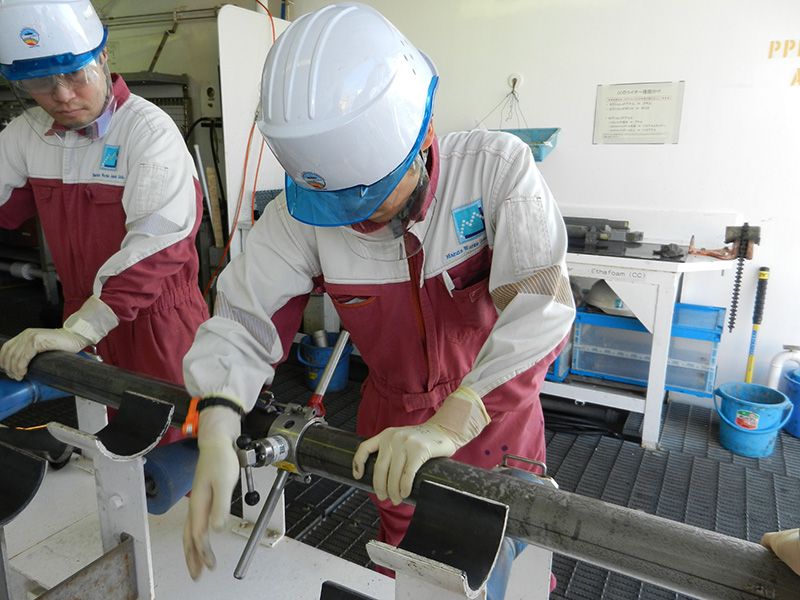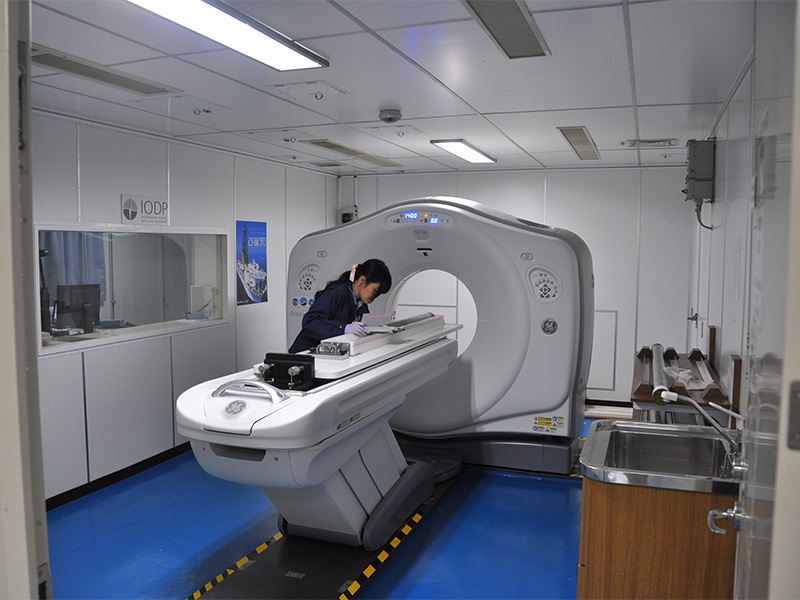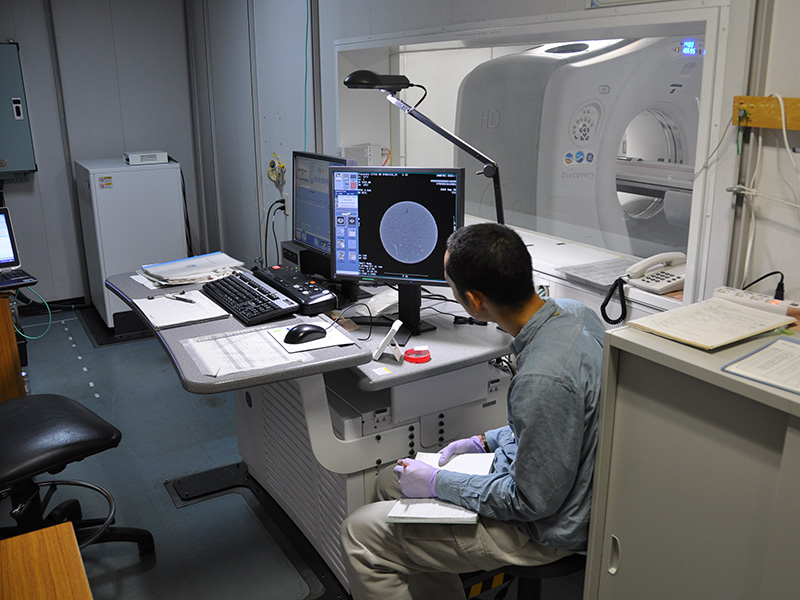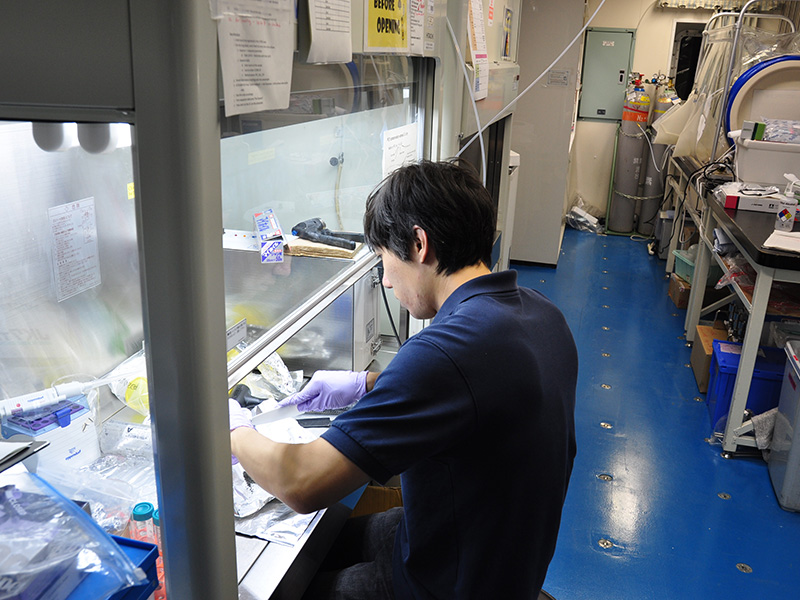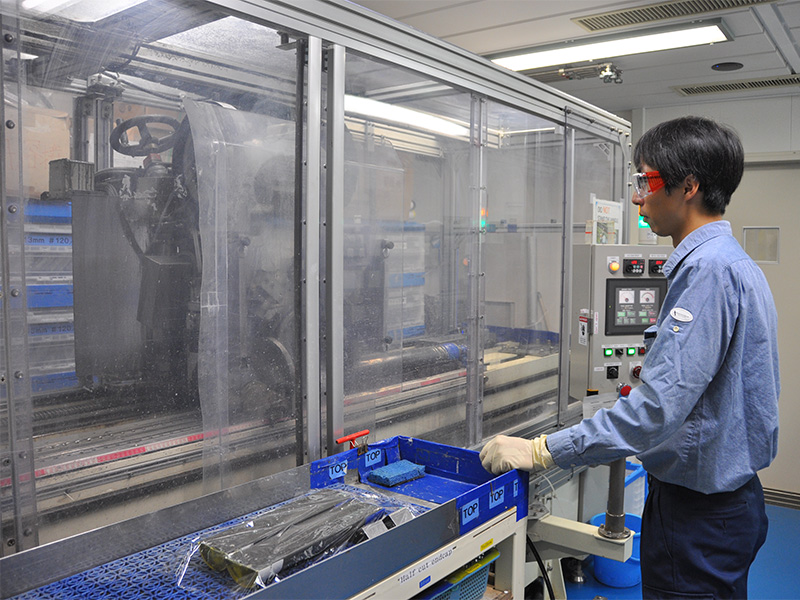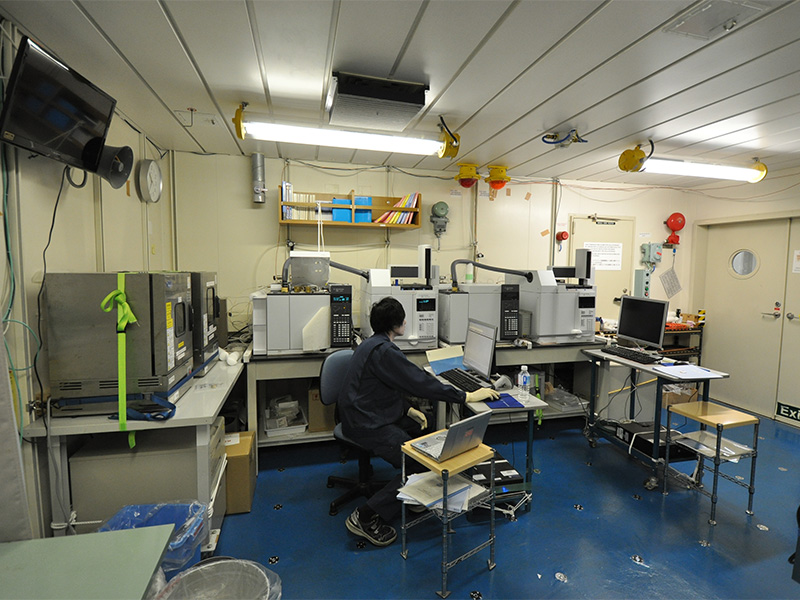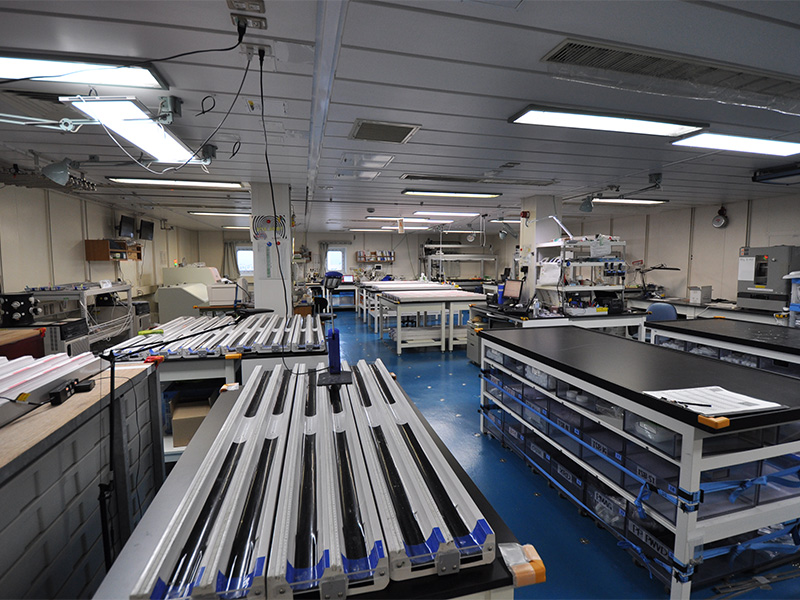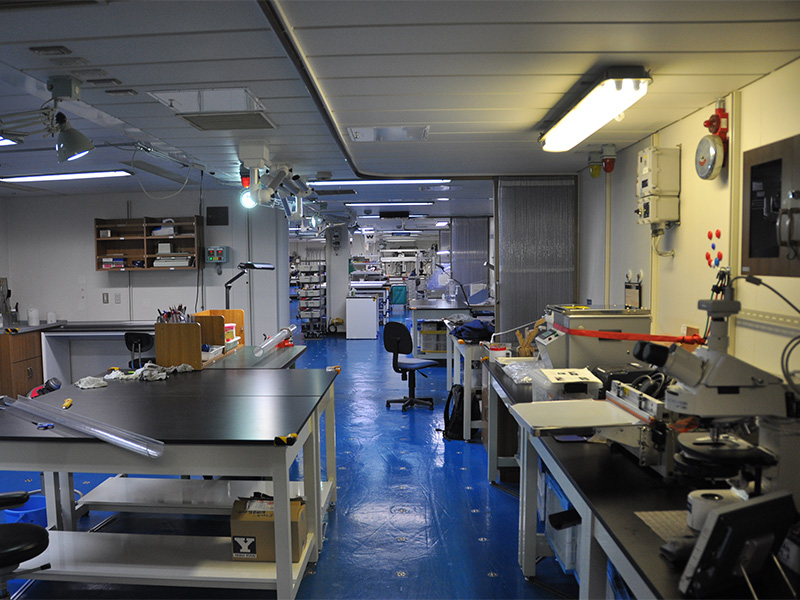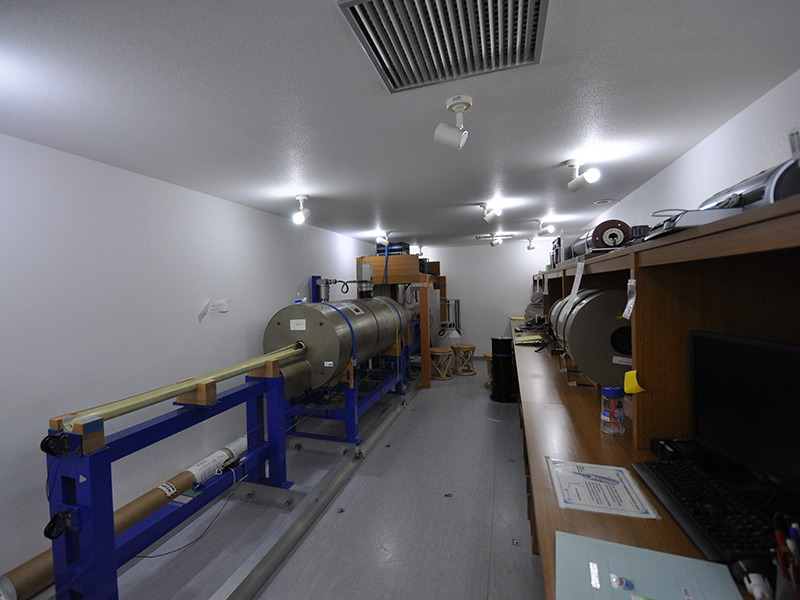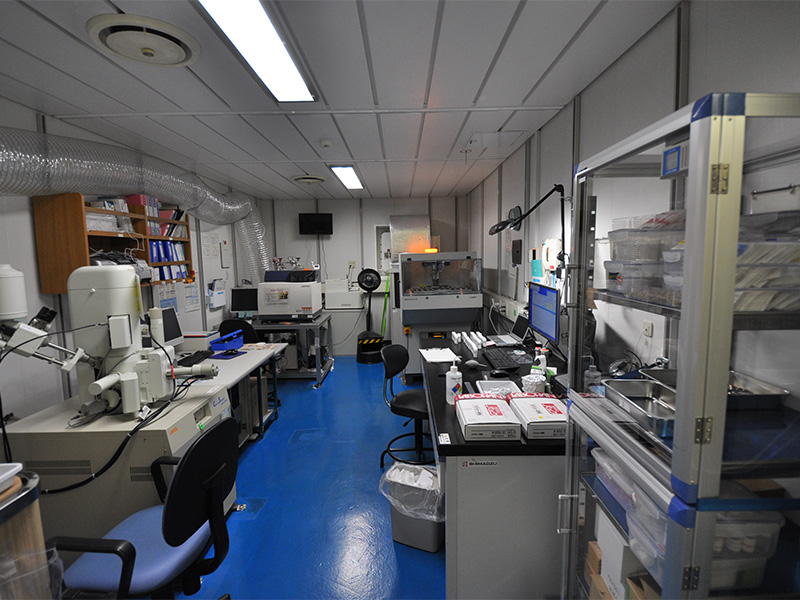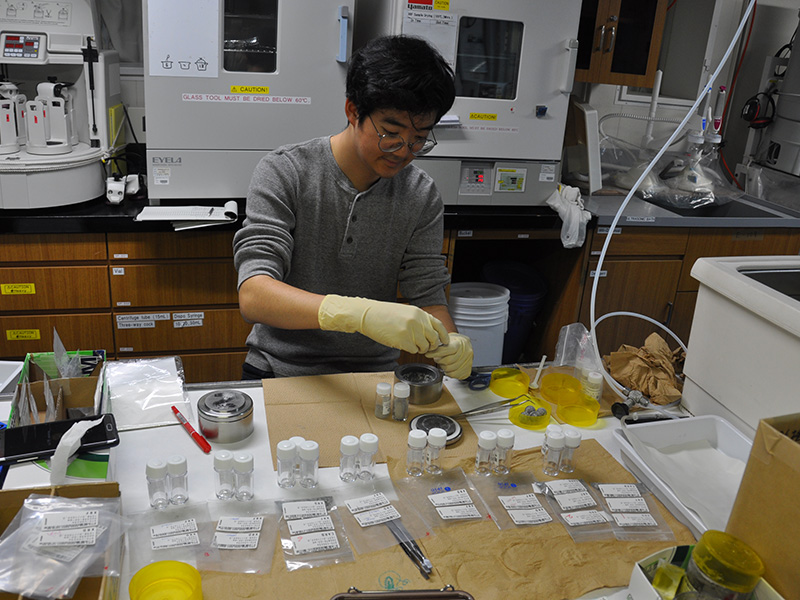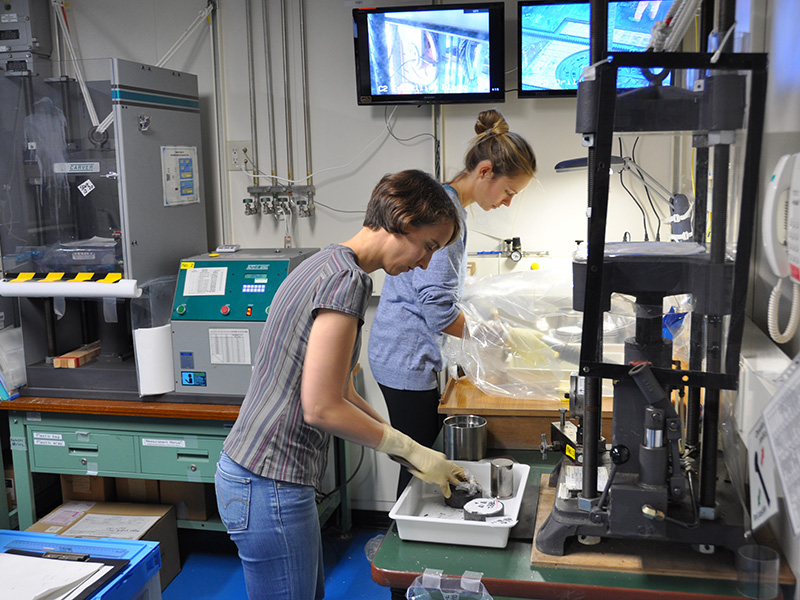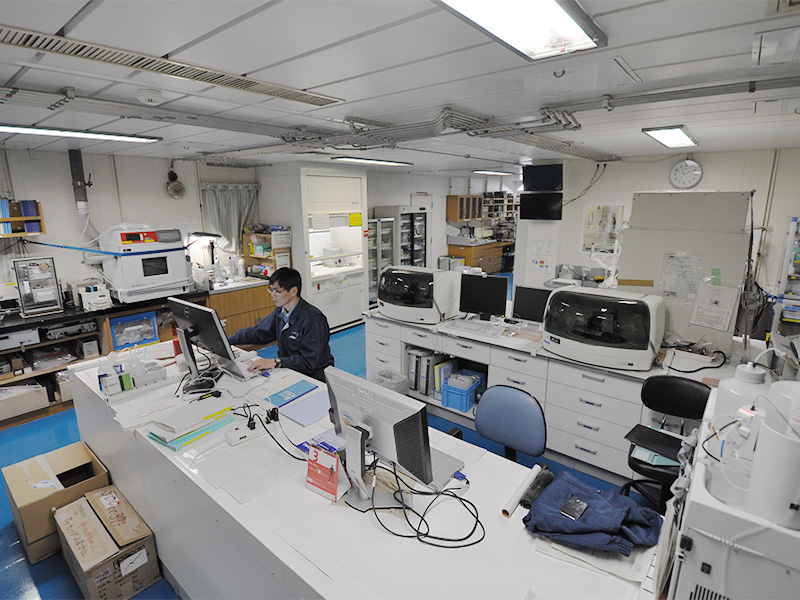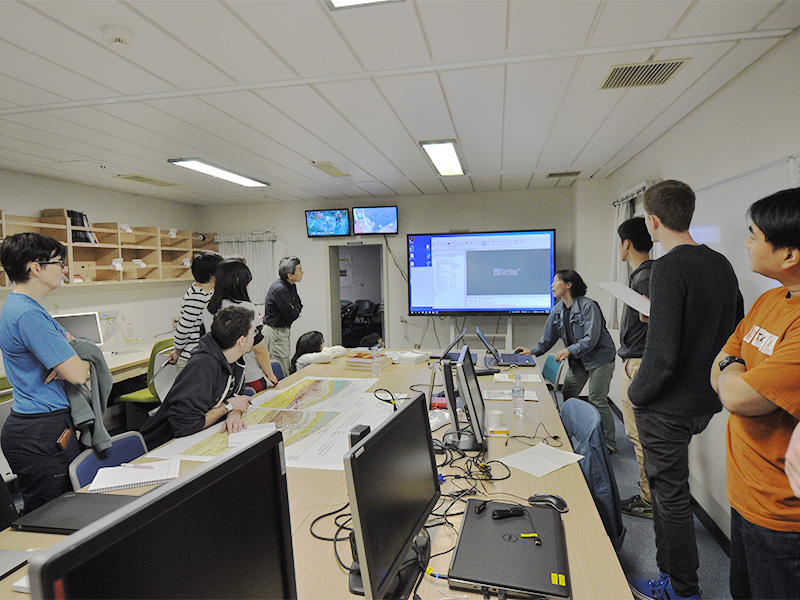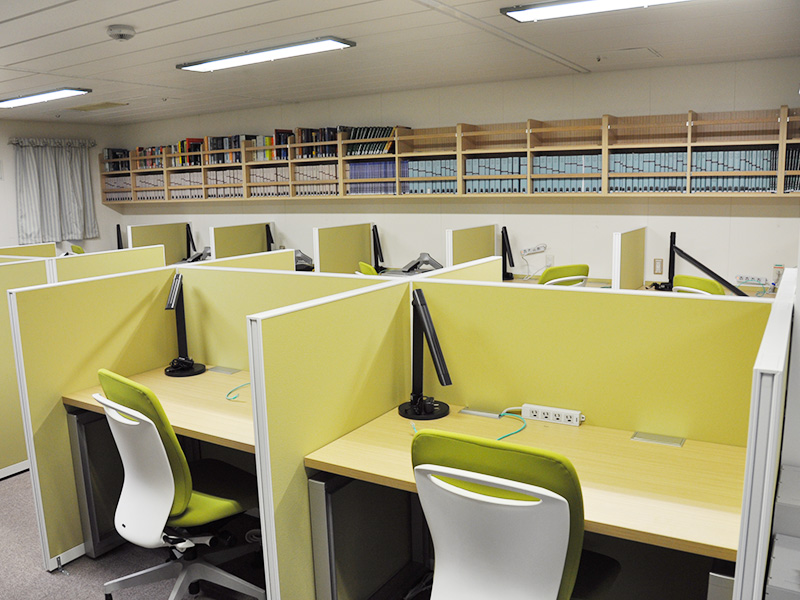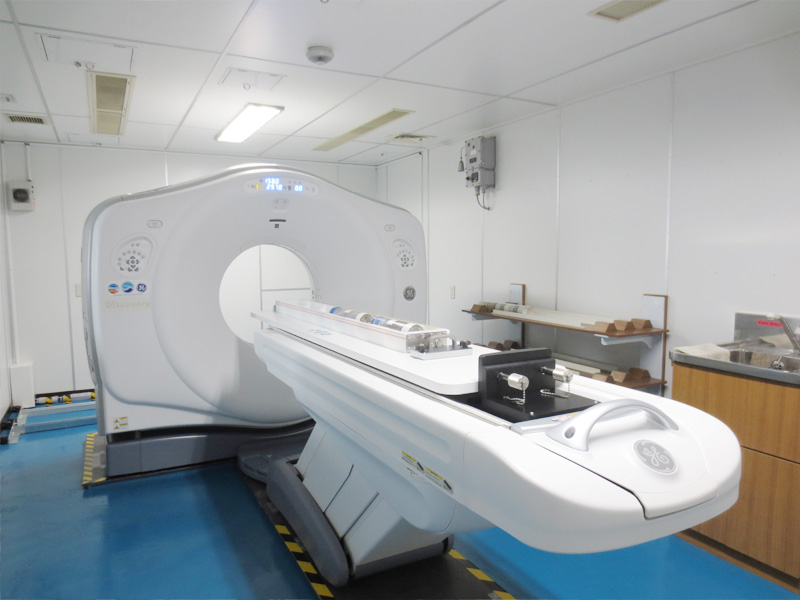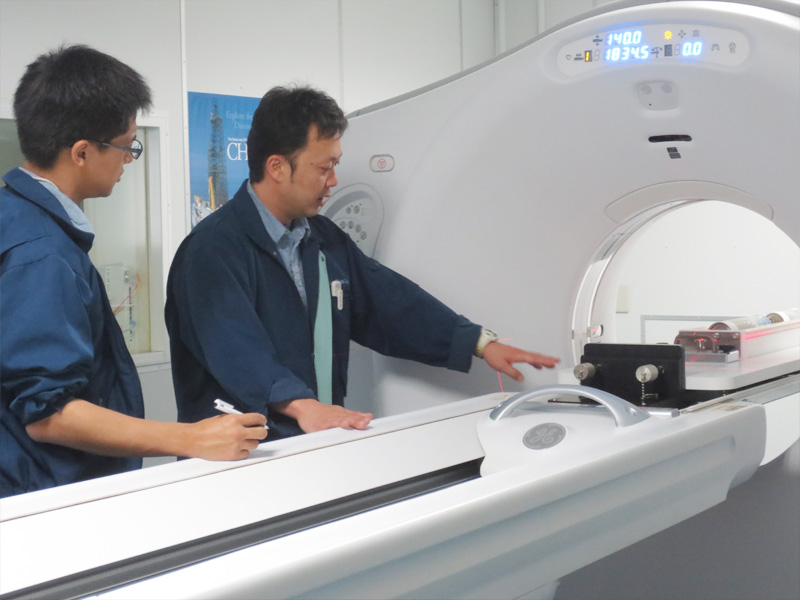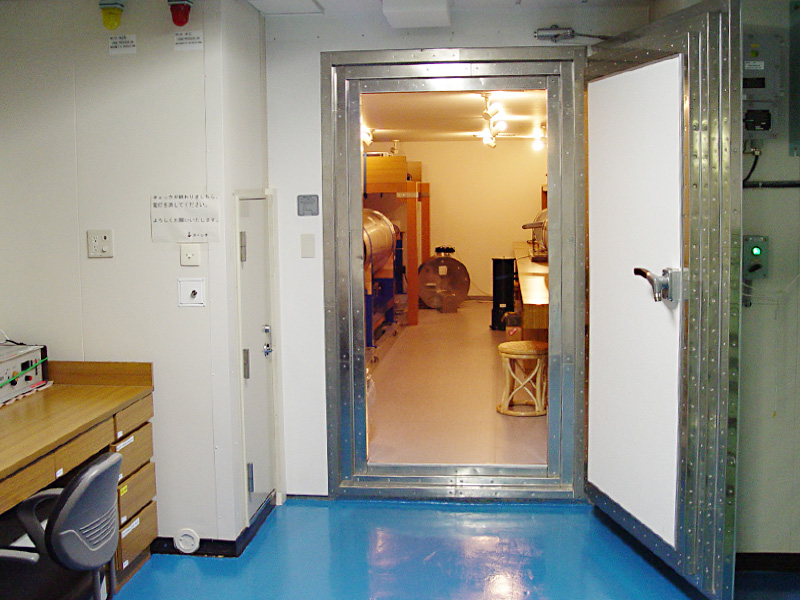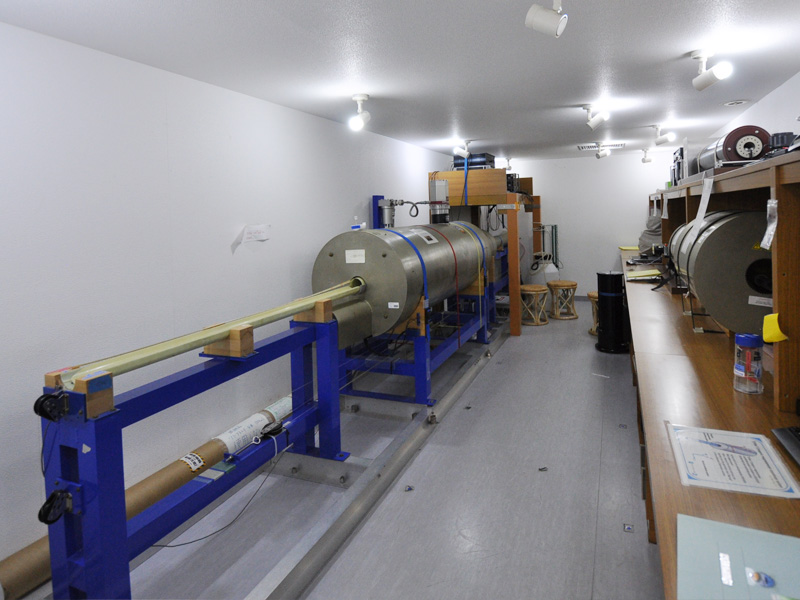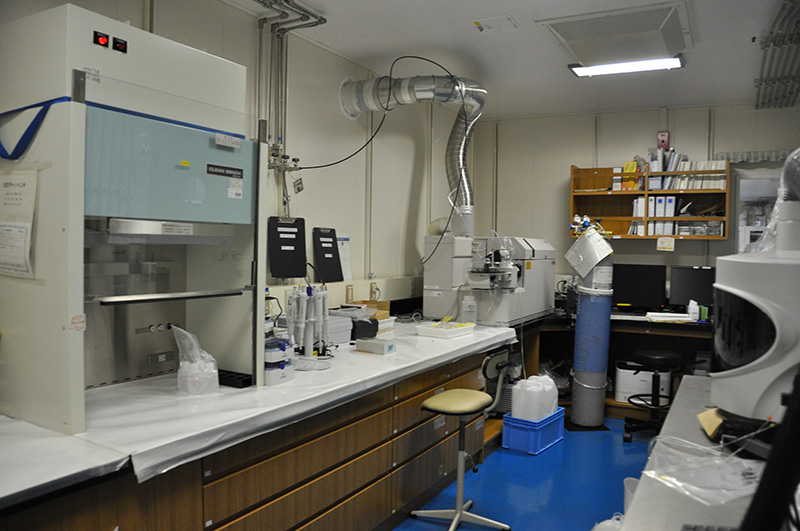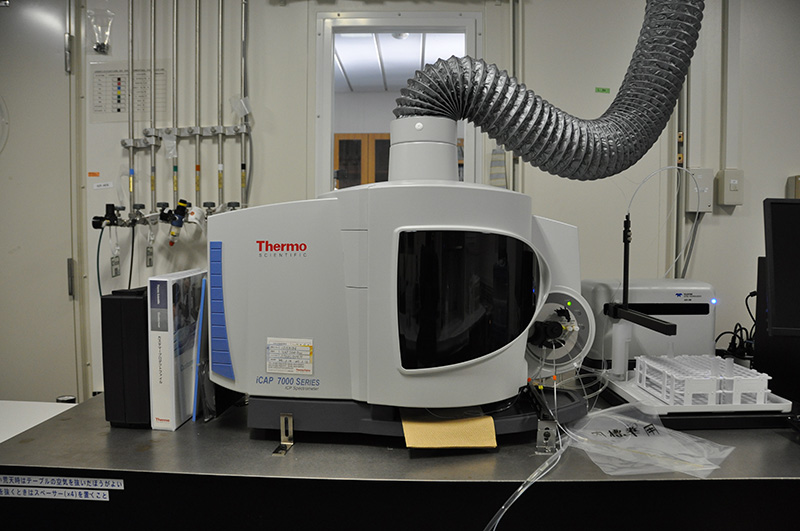Shipboard Laboratory: the areas for shipboard scientists to analyze geological samples (cores, cuttings, gases, etc) with lab technicians.
The Lab Area consists of 4 decks: Lab Roof Deck, Core Processing Deck, Lab Street Deck, and Lab Management Deck. Each deck has a specific role to smoothly and efficiently process core samples.
Lab Roof Deck
-
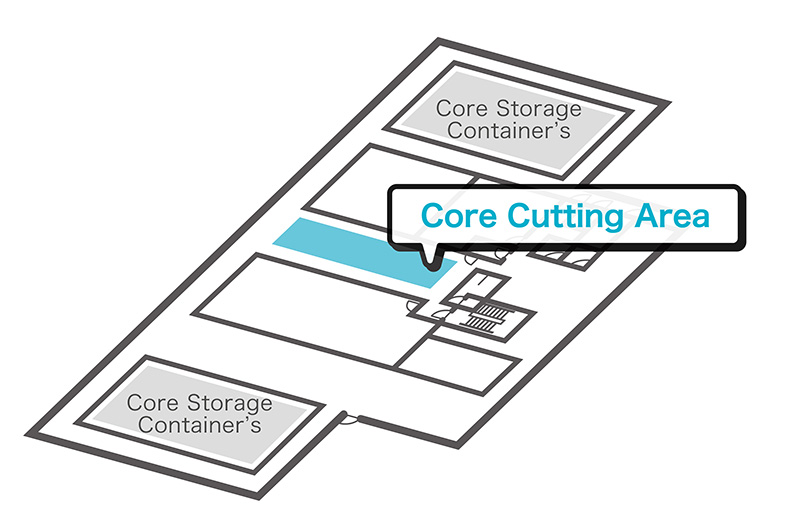
-
The Lab Roof Deck is the uppermost deck of the Lab Area, and this is where the Core Cutting Area is connected to the Drill Floor via a catwalk. Here is where the scientists first meet core samples retrieved from below the seafloor. A 9.5 m long core is the “standard” core length, although actual measured recovery can be longer. Each core is then cut into 1.5 m long sections, and samples taken for gas analysis . Because the core might have hazardous gases (e.g. H2S), cores are vented and tested while drilling personnel use special breathing apparatus, the “cascade system”, which is available on the ship.
Core Processing Deck
-
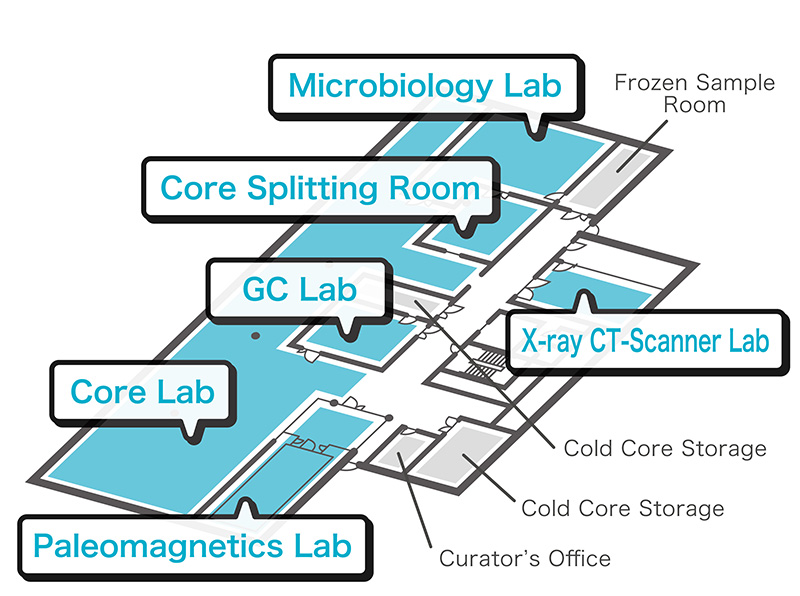
See the 360゜view !
-
After the cores are cut into 1.5 m sections, and entered into the laboratory data management system, they are transported to the Core Processing Deck, one deck below by elevator. This deck is designed primarily for physical properties measurements, whole core sampling, visual core description, and microbiological sampling.
First, the core sections are scanned with an X-ray CT scanner to observe details of the internal structure. Next, the cores are logged with physical property sensors such as density, magnetic susceptibility, etc. Short whole-round cores are cut for specific analyses, such as interstitial water analysis, microbiological studies, stress analysis, etc.
After all “whole-round core handling” has been completed, the cores are split into “archive” and “working” halves in the Core Splitting Room. The archive halves are used for “non-desctructive measurements” such as visual core description, image scanning, paleo magnetic measurements, etc and are preserved as is for future research. On the other hand, “destructive measurements” such as density measurement, chemical analysis, thin section making, etc are carried out on working halves. Personal samples for post-cruise studies are also taken from the working halves.
Lab Street Deck
-
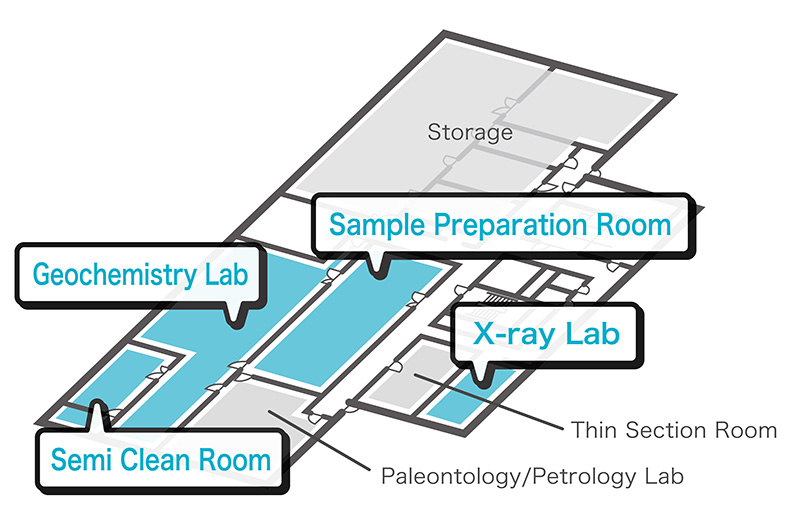
See the 360゜view !
-
The Lab Street Deck, located two decks downstairs from the Core Cutting Area, is designed mainly for chemical analyses and microscope observation. Here are located the Sample Preparation Room, Geochemistry Lab, Thin Section Room, and X-ray Diffraction Room. Samples are squeezed under high pressure to extract interstitial water, or milled/powdered, etc., in the Sample Preparation Room, and then chemical composition analyzed in the Geochemistry Lab (concentration of anions, cations, trace elements in interstitial water, carbonate contents in powdered samples, etc.) and/or X-ray Diffraction Room (mineral composition, major elements, etc.).
Lab Management Deck
-
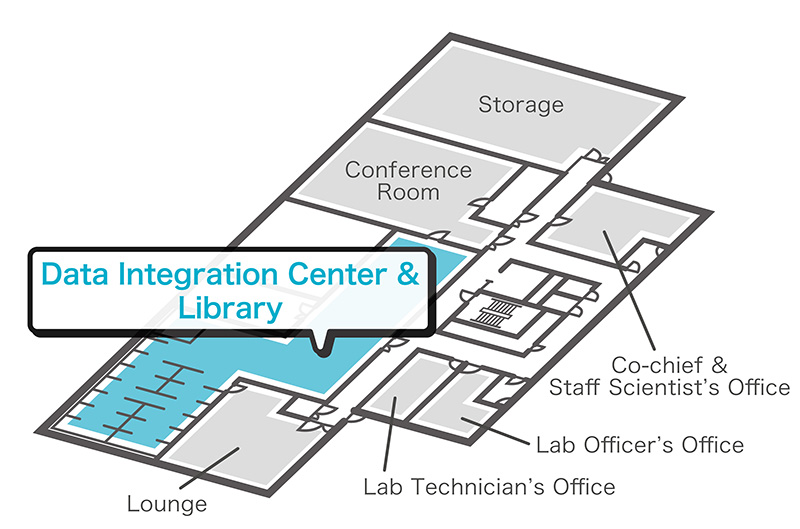
-
The lowest deck is the Lab Management Deck. Here are are spaces for data analysis, report writing, and meetings. Work spaces, a library, and a Data Integration Center, provided with a large desk for paper printouts, a conference room, a lounge for science party, and the co-Chief Office can all be found here.
The Chikyu Lab facilities
The Chikyu Labs are fully equipped with a wide range of analytical instruments, tools, and facilities.
X-ray CT Scanner
Chikyu is the first ship equipped with an X-ray CT scanner for science purpose. The shipboard X-ray CT scanner is a medical-grade instrument, with the only adaptation from a hospital unit is that the patient bed is modified for core samples. The XCT scanner, by contrasting densities, provides detailed 3D images of the structure inside cores without physically touching them. Cracks, faults, matrices of different materials, and drilling induced disturbances, can all be identified using the XCT scanner. This is vital when trying to find uniform, unremarkable, whole-rounds sections for analyses like interstitial water, microbiological, or personal sampling.
Magnetic Shield Room for Paleomagnetic analysis
Chikyu is the only ship equipped with a magnetically shielded room for paleomagnetic analysis. This “room-within-a-room” is made of permalloy, which shields the room from the Earth’s magnetic field. This room is equipped with several instruments to measure the extremely weak magnetic signals contained within the core samples.
Semi-clean Room for geochemical analysis
Within the geochemical lab is a small semi-clean room, which has filters permitting less than 100 particles of 0.5 micro-meter size in 1 cubic meter per 3 minutes. An Inductively Coupled Plasma Mass Spectrometer (ICP-MS) and an Inductively Coupled Plasma Optical Emission Spectrometer (ICP-OES) are installed here to measure minor and trace elements in interstitial water or rock samples.





